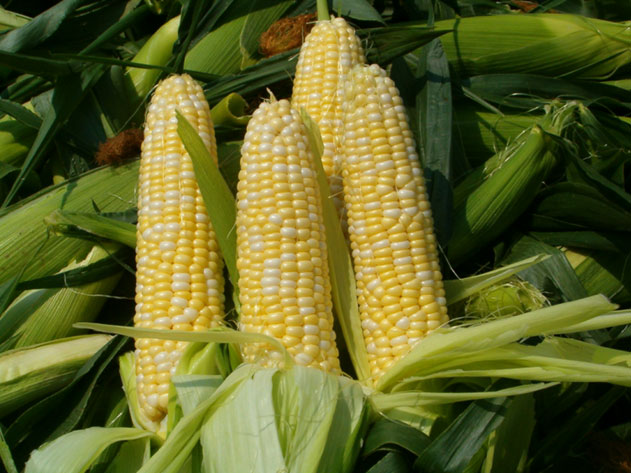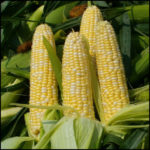Maria Ofitserova Ph D. – Pickering Laboratories
Glyphosate, the active ingredient in Roundup, is the most widely used herbicide in the world. In the US, the Environmental Protection Agency (EPA) regulates Glyphosate and sets residue limits for different crops as well as drinking water. Recent research, however, has raised concerns about Glyphosate safety and its prevalence in the environment. The International Agency for Research on Cancer (IARC) rated Glyphosate as “probably carcinogenic to humans” and several studies, including one conducted by Germany’s Federal Environment Agency (UBA), have indicated a massive increase in the number of human urine samples contaminated with Glyphosate over the last 15 years.
The increased use of Glyphosate has been studied as well. According to Bill Freese, a science policy analyst with the Center for Food Safety, 50 times more Glyphosate is allowed on corn grain now than was allowed in 1996. The US-EPA has also increased what it considers to be a safe amount of Glyphosate exposure by a factor of 17. The EPA's high-end estimate of infant exposure to Glyphosate exceeds the level considered safe for them in 1983, Freese adds.
 As the scrutiny of Glyphosate grows in the United States, a U.S. Government Accountability Office report has criticized the Food and Drug Administration (FDA) for not sufficiently monitoring residues of the chemical on foods. This February, the FDA announced testing of Glyphosate in foods including soybeans, corn, milk, and eggs. Meanwhile, consumer groups, academics and testing laboratories have claimed to have detected Glyphosate in breast milk, honey, cereal, wheat flour, soy sauce, and infant formula as well.
As the scrutiny of Glyphosate grows in the United States, a U.S. Government Accountability Office report has criticized the Food and Drug Administration (FDA) for not sufficiently monitoring residues of the chemical on foods. This February, the FDA announced testing of Glyphosate in foods including soybeans, corn, milk, and eggs. Meanwhile, consumer groups, academics and testing laboratories have claimed to have detected Glyphosate in breast milk, honey, cereal, wheat flour, soy sauce, and infant formula as well.
The herbicide registration renewal of Glyphosate in the European Union was questioned due to mounting evidence of chronic human exposure and insufficient safety data, especially in children, and a suspected link to cancer. As of now, the decision on relicensing has been postponed. Several EU members, such as France, Sweden, Netherlands and Italy, have indicated opposition to renewal of the 15-year license.
With this growing international concern about Glyphosate, additional regulations from the US-FDA and international regulatory agencies are possible in the upcoming months and years.
Pickering Laboratories has over 30 years’ experience manufacturing and selling instruments and reagents for Glyphosate analysis in accordance to the US-EPA Method 547 for Glyphosate Analysis in Drinking Water as well as the AOAC Method 991.08 for Glyphosate Analysis in Environmental Waters. These HPLC methods are based on post-column derivatization technology with florescence detection. The AOAC Official Method 2002.52 for Analysis of Glyphosate in Crops describes easy clean-up procedures that are successfully combined with Pickering Laboratories’ post-column derivatization for analysis of Glyphosate in crops such as soy, corn, alfalfa, and sunflower seeds as well as vegetables such as tomatoes and broccoli. The analytical method is sensitive and selective, and it can be easily implemented in any laboratory. For further details visit our webpage at: www.pickeringlabs.com
Please enjoy these excellent additional resources/sources:
http://civileats.com/2016/02/17/fda-to-start-testing-for-Glyphosate-in-food/
http://www.theguardian.com/environment/2016/mar/08/eu-vote-on-controversial-weedkiller-licence-postponed-Glyphosate
http://www.gmwatch.org/news/latest-news/16666-german-environment-agency-study-finds-Glyphosate-in-urine
http://www.theecologist.org/News/news_round_up/2987365/almost_all_germans_contaminated_with_Glyphosate.html


 As the scrutiny of Glyphosate grows in the United States, a U.S. Government Accountability Office report has criticized the Food and Drug Administration (FDA) for not sufficiently monitoring residues of the chemical on foods. This February, the FDA announced testing of Glyphosate in foods including soybeans, corn, milk, and eggs. Meanwhile, consumer groups, academics and testing laboratories have claimed to have detected Glyphosate in breast milk, honey, cereal, wheat flour, soy sauce, and infant formula as well.
As the scrutiny of Glyphosate grows in the United States, a U.S. Government Accountability Office report has criticized the Food and Drug Administration (FDA) for not sufficiently monitoring residues of the chemical on foods. This February, the FDA announced testing of Glyphosate in foods including soybeans, corn, milk, and eggs. Meanwhile, consumer groups, academics and testing laboratories have claimed to have detected Glyphosate in breast milk, honey, cereal, wheat flour, soy sauce, and infant formula as well.
